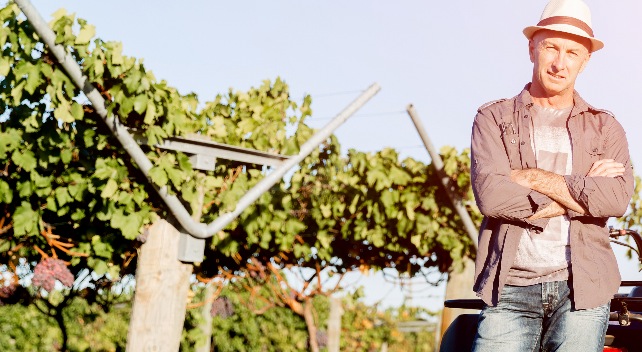
For Murray Stone, farming is all in the family. His great-great grandfather Alexander Leask left Scotland to settle the land north of Port Perry Ontario in 1852. Alexander’s son James – known as Big Jim – showed his Shorthorn Cattle and Draft Horses at the Royal Winter Fair in Chicago before his herd was wiped out by tuberculosis.
But through the ups and downs of farm life, the family remained on the land.
Today, Valcroft Farms Inc. has grown to 220 acres and Stone runs a 50-cow dairy operation with his son Alec. He is a 2007 recipient of Holstein Canada’s Master Breeder shield – putting Stone among an elite group of Canadian dairy farmers recognized for breeding cows that combine high production and outstanding conformation with high proficiency in reproduction, health, and longevity.
“We try to keep around 115 head of cattle altogether,” Stone says. “Dairy farming is a full-time job, but you get hooked on it.”
The Stones are one of 125 Durham Region families who can trace their farming roots back to Confederation and beyond, an agricultural legacy that was honoured as part of this year’s Canada 150 celebrations.
“Family farms are very much alive and well in Durham Region,” notes Nancy Rutherford, Manager of Economic Development, Agriculture and Rural Affairs for Durham Region. More than 90 per cent of the region’s 1,454 farms are still family-owned.
Even more exciting, says Rutherford, is the number of young people returning to the farm, attracted by advances in farming technology and the prospect of running their own successful agri-business.
Ontario’s growing heartland
Located just east of the Greater Toronto Area (GTA), Durham Region is made up of eight area municipalities that range from large urban centres to rural towns and villages, including the cities of Oshawa and Pickering, the towns of Ajax and Whitby, the Municipality of Clarington, and the townships of Brock, Scugog and Uxbridge.
The region is one of the fastest growing areas of Canada, with its population of around 650,000 residents expected to reach close to 1 million by 2031. In addition, Durham Region offers easy access to Canada’s largest market of 5 million people, and is within a day’s drive of 135 million additional consumers in Canada and the United States.
Key economic sectors include advanced manufacturing, digital technologies, energy, tourism, and of course, agri-business.
Agri-business is big business
“Agriculture has always been the backbone of Durham Region,” says Rutherford, “and our farmers have embraced technology in order to remain competitive and to grow.”
Today, agri-business is the second largest primary goods producing sector in Durham Region, after auto manufacturing.
Blessed with a moderate climate and rich soil, the region produces an abundance of agricultural products with the top nine commodities generating cash receipts of $227.4 million in 2012.
Dairy farming dominates production, followed by corn, floriculture, nursery and sod, soybeans, poultry, cattle and calves, eggs, hogs, fruit, and vegetables.
Growers also produce new biomass crops for biofuels and chemicals as well as new crops for Canada’s ethnically diverse population.
World-renowned livestock breeders
Murray Stone’s son studied dairy herd management before returning to Valcroft Farms to become the sixth generation of his family to make a living from the land.
“Technology has really allowed farms to grow,” says Stone. “My son will probably be the last one on our farm to milk only 50 cows. The average herd size now is closer to 100 milking cows.”
Durham Region has long been world-renowned for its Holstein cattle breeders. The Holstein Association of Canada was founded here in 1884, notes Rutherford, while legendary farms like Roybrook and Hannover Hill have made a lasting impact on dairy farming around the globe.
Today, Leading Livestock Genetics Alliance (LLG) is carrying on the tradition of genetic excellence. As a regional alliance of dairy cow and dairy goat breeders it has an international reputation for producing quality genetics which are already found in many countries looking to improve their dairy herds.
From farm to table with room to grow
Durham Region’s abundance of high-quality agricultural inputs and its proximity to the market make it an attractive choice for food processors, including Maple Leaf Foods, the Elite Meat Company, the Great Canadian Meat Company, and Del Monte Fresh Produce (Canada).
Several large food packagers and materials suppliers also call Durham Region home, supported by a complementary food distribution and logistics network.
An integrated transportation network that includes provincial and regional highways with links to Highway 401, cargo loading and deep-sea shipping ports that connect to the Atlantic Ocean via the St. Lawrence Seaway, transcontinental railway lines, and international airports facilitates easy access to the global marketplace.
In addition, Durham Region offers a wide selection of vacant, developable land at rates that are amongst the lowest in the GTA.
“We’ve got a whole stream of available employment land suitable for food processing, manufacturing and packaging,” says Rutherford.
“We’re actively encouraging those types of businesses to come in and support our agricultural production.”
With numerous grants, programs and direct funding opportunities available, as well as a number of organizations offering support to incoming industry and business, Durham Region is building on its farming heritage to become one of the leading agriculture and agribusiness areas in Ontario.
To learn more about agri-business opportunities in Durham Region visit www.investindurham.ca















